You'll find significant variation in soap mold lifespans depending on the material. Silicone molds typically last 2+ years with weekly use, while metal molds can serve you for decades despite higher upfront costs. HDPE plastic offers excellent durability, outlasting acrylic versions that crack easily. Wooden molds fall somewhere in between but require careful moisture management. Your choice of material and maintenance habits will ultimately determine how long your molds stay in prime condition.
Durability Comparison of Essential Soap Mold Materials

When choosing soap molds, durability plays an essential role in their long-term value and performance.
You'll find that silicone molds offer reliable durability, lasting over two years with weekly use, though they'll eventually show signs of wear.
While wooden molds can serve your needs, they're prone to warping and require liners, making them less ideal for professional soap making.
HDPE plastic molds stand out with their impressive heat resistance and longevity, unlike their acrylic counterparts that tend to crack more easily.
HDPE plastic molds deliver superior durability and heat resistance, making them a more reliable choice than crack-prone acrylic options.
If you're looking for the most durable option, metal molds are your best bet, despite their higher cost. They resist warping and cracking exceptionally well.
Remember that proper usage and regular maintenance greatly extend the lifespan of any mold material you choose.
Impact of Usage Patterns on Mold Longevity
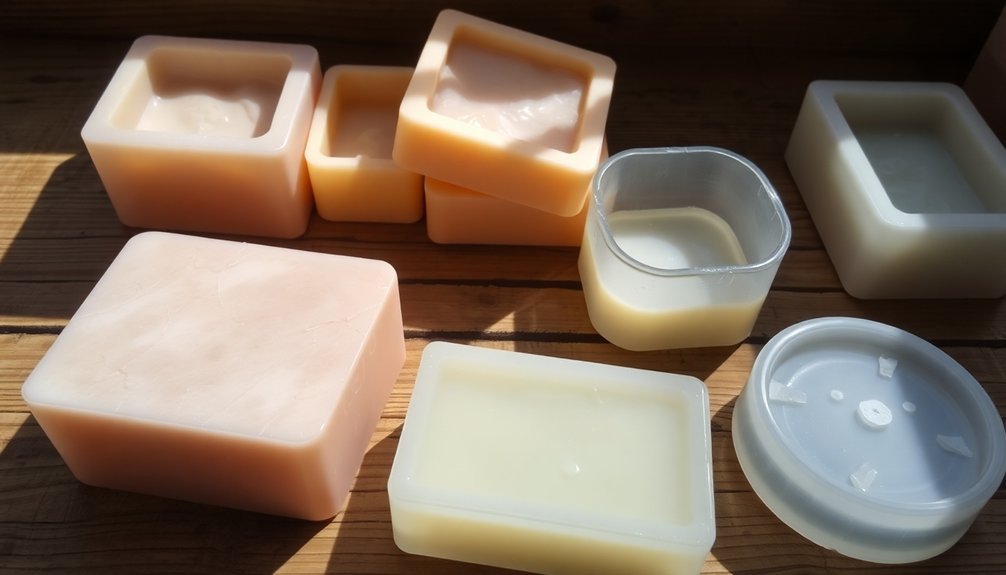
While frequency of use greatly impacts mold durability, your soap-making habits play an even bigger role in determining how long your molds will last. Your usage patterns directly affect mold longevity, with proper care being essential for extending their lifespan.
Silicone molds can serve you well for over two years with weekly use, but you'll need to be gentle during soap removal to prevent tearing.
Wooden molds require extra attention, as moisture exposure from repeated use can lead to warping.
You'll find that acrylic molds are particularly sensitive to essential oils, making their durability dependent on your ingredient choices.
Plastic molds, while initially cost-effective, will need more frequent replacement due to their tendency to warp under regular use.
Preventive Maintenance and Storage Practices
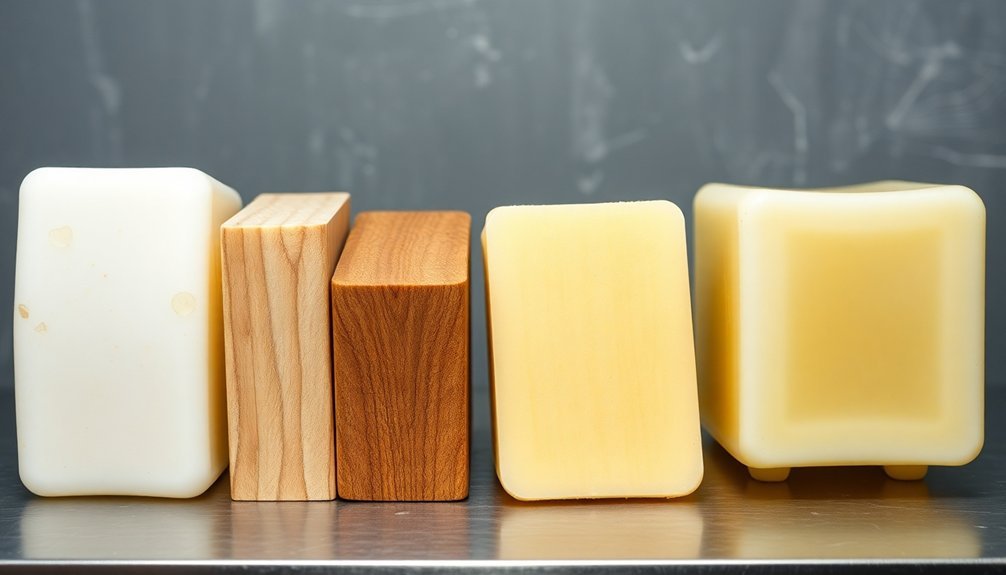
A robust maintenance routine forms the foundation of extending your soap molds' lifespan. With proper preventive maintenance, your silicone molds can last over two years of weekly use.
Start by implementing regular cleaning with warm water and mild dish soap after each use, avoiding harsh chemicals that can deteriorate the material.
Gentle cleaning with mild soap and warm water helps preserve your molds' integrity while preventing chemical-induced deterioration.
When handling soap molds, be gentle during product removal to prevent tears and structural damage. Use appropriate mold release agents to protect the surface and make unmolding easier.
For storage practices, guarantee your molds are completely dry before putting them away to prevent moisture-related damage. Keep them in a cool, dry place to maintain their shape and integrity.
Address any minor damages promptly to prevent them from worsening and compromising the mold's functionality.
Signs of Wear and Replacement Indicators
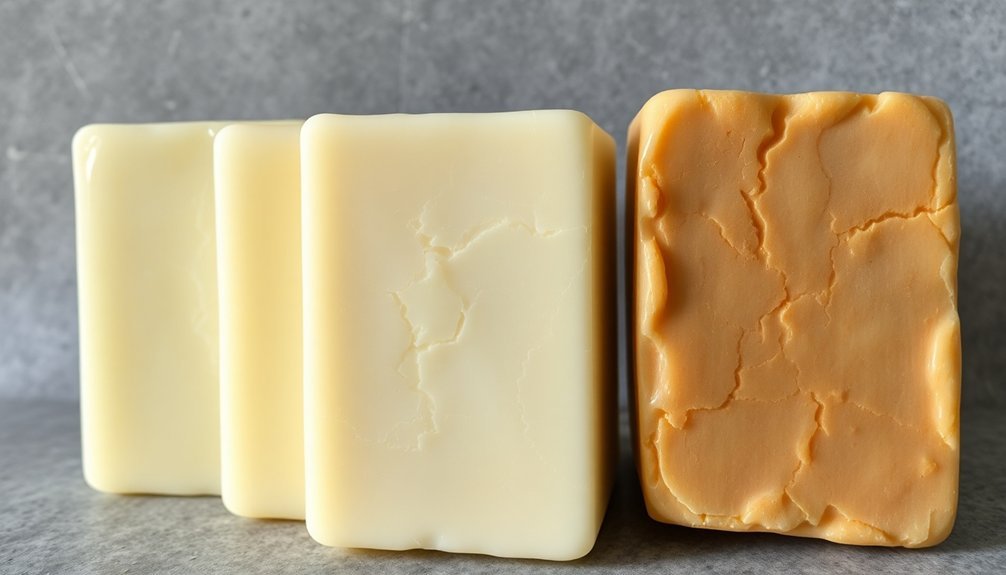
Since different mold materials exhibit unique wear patterns, you'll need to monitor specific indicators that signal replacement time. Each material deteriorates differently, affecting your soap production quality and safety.
- Watch your silicone molds for weakening, rips, or fading detail work – these issues can prevent clean soap removal and crisp designs.
- Check wooden molds regularly for warping from moisture exposure, especially if your liner shows signs of deterioration.
- Replace metal molds immediately if you spot any rust or corrosion to maintain safe soap production.
- Monitor acrylic molds for cracking or surface changes that might affect soap adhesion.
Don't wait until your molds completely fail before replacing them. By recognizing early signs of wear, you'll maintain consistent soap quality and avoid production delays or defective products.
Environmental Factors Affecting Mold Lifespan
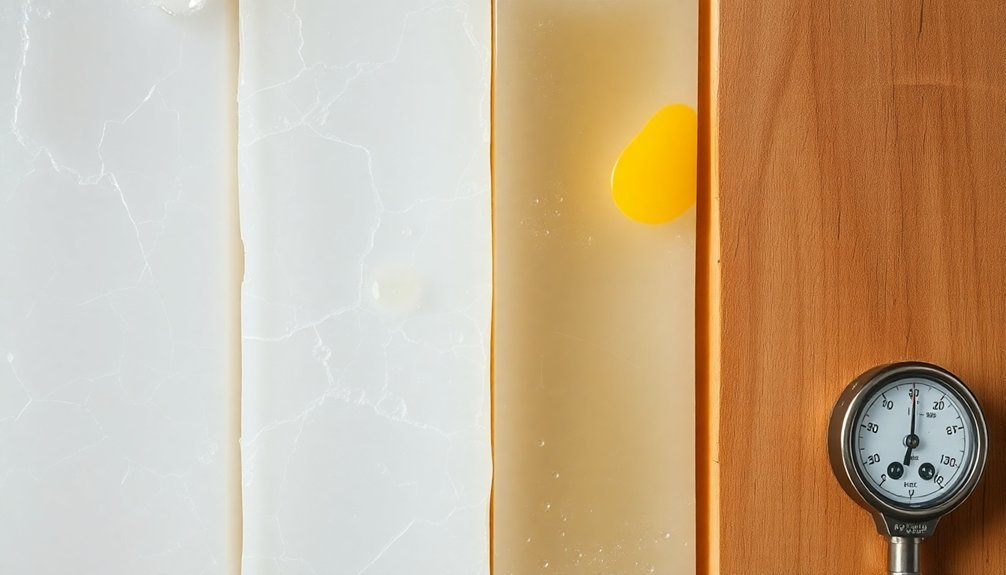
Understanding your soap molds' environmental vulnerabilities can greatly extend their useful life. The key environmental factors that impact your molds' lifespan include humidity, temperature, and direct sunlight exposure. You'll find that both silicone molds and wooden molds are particularly susceptible to these conditions.
| Factor | Impact on Molds |
|---|---|
| Humidity | Accelerates degradation through moisture absorption |
| Temperature | Affects material integrity and flexibility |
| Sunlight | Causes brittleness and material breakdown |
To maximize your soap molds' durability, store them in cool, dry places away from direct light. Harsh cleaning chemicals can also speed up wear, so use gentle cleaning methods. Remember that frequent use naturally causes molds to wear out faster, but proper storage conditions can greatly extend their lifespan. Regular inspection for environmental damage will help you maintain your molds effectively.
Frequently Asked Questions
What Is the Best Material for a Soap Mold?
You'll find silicone molds are your best choice for soap making. They're durable, flexible, and release soap easily. If you want an alternative, HDPE molds offer excellent durability and heat resistance.
How Long Does Soap Stay in Mold?
You'll need to keep your soap in the mold for 1-3 days, depending on your recipe and mold type. For loaf molds, wait 2-3 days, while smaller cavity molds may require less time.
How Long Do Molds Last?
You'll find that silicone molds last 1-2 years with regular use, while metal molds can serve you for decades. Wooden molds typically last 3-5 years, and acrylic ones might need replacement within a year.
What Is the Life of Silicone Molds?
Your silicone molds can last anywhere from several months to over two years with proper care. If you handle them gently during soap removal and store them correctly, they'll maintain their quality longer.
In Summary
You'll get the most life from silicone molds (3-5 years) when you store them properly and avoid extreme temperatures. Wood molds can last 2-3 years with regular sealing and careful cleaning, while plastic molds typically need replacement after 1-2 years of regular use. Remember to inspect your molds for warping, cracking, or surface degradation – these are clear signs it's time for replacement.

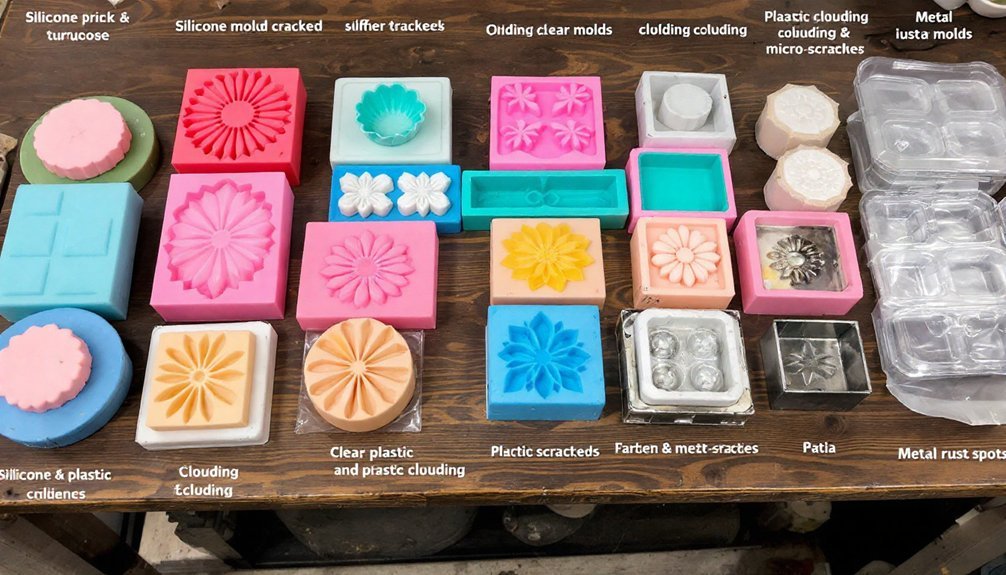
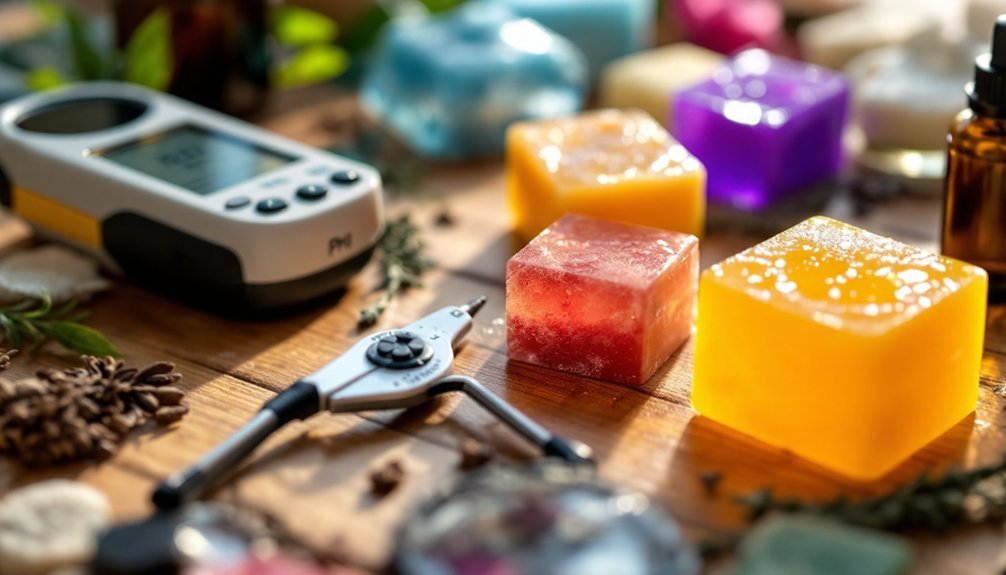
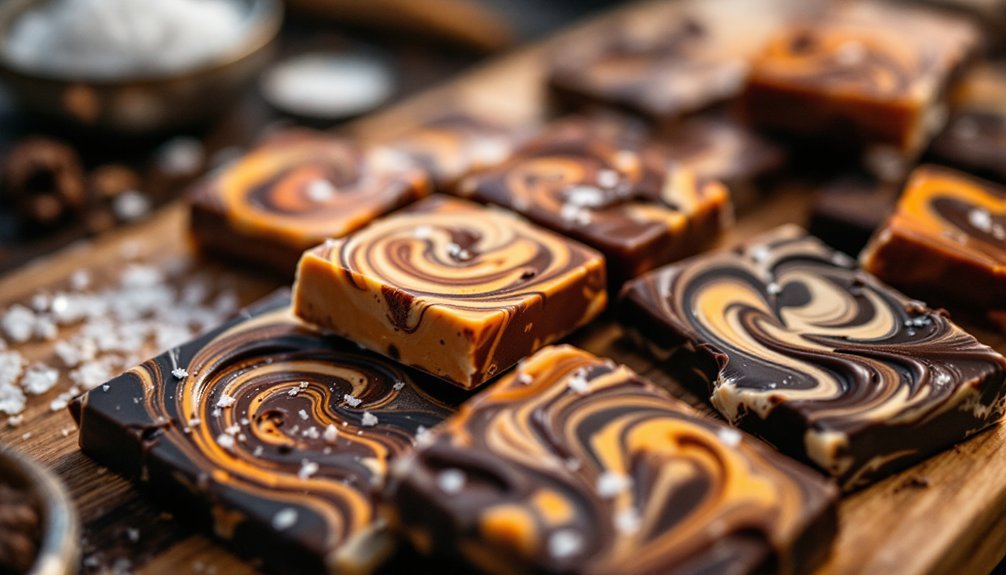
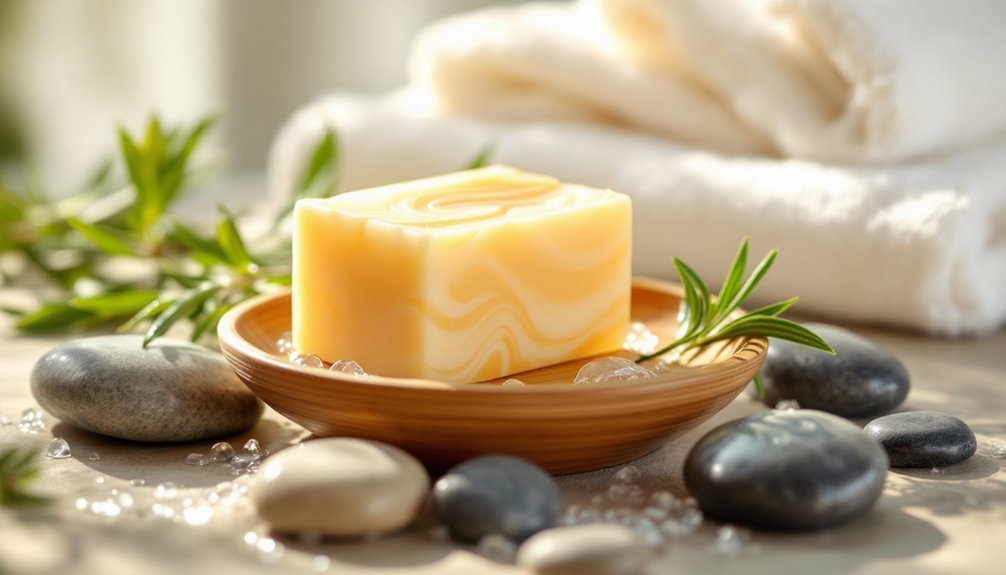
Leave a Reply